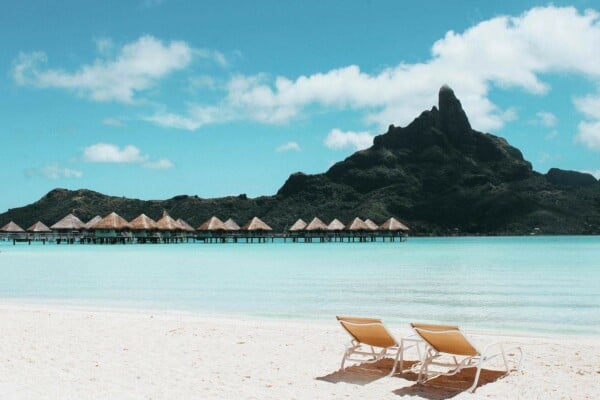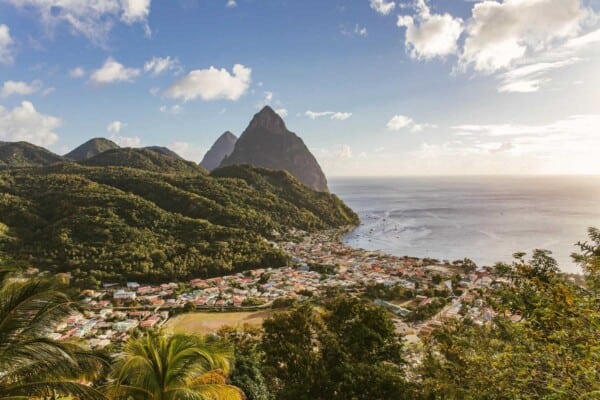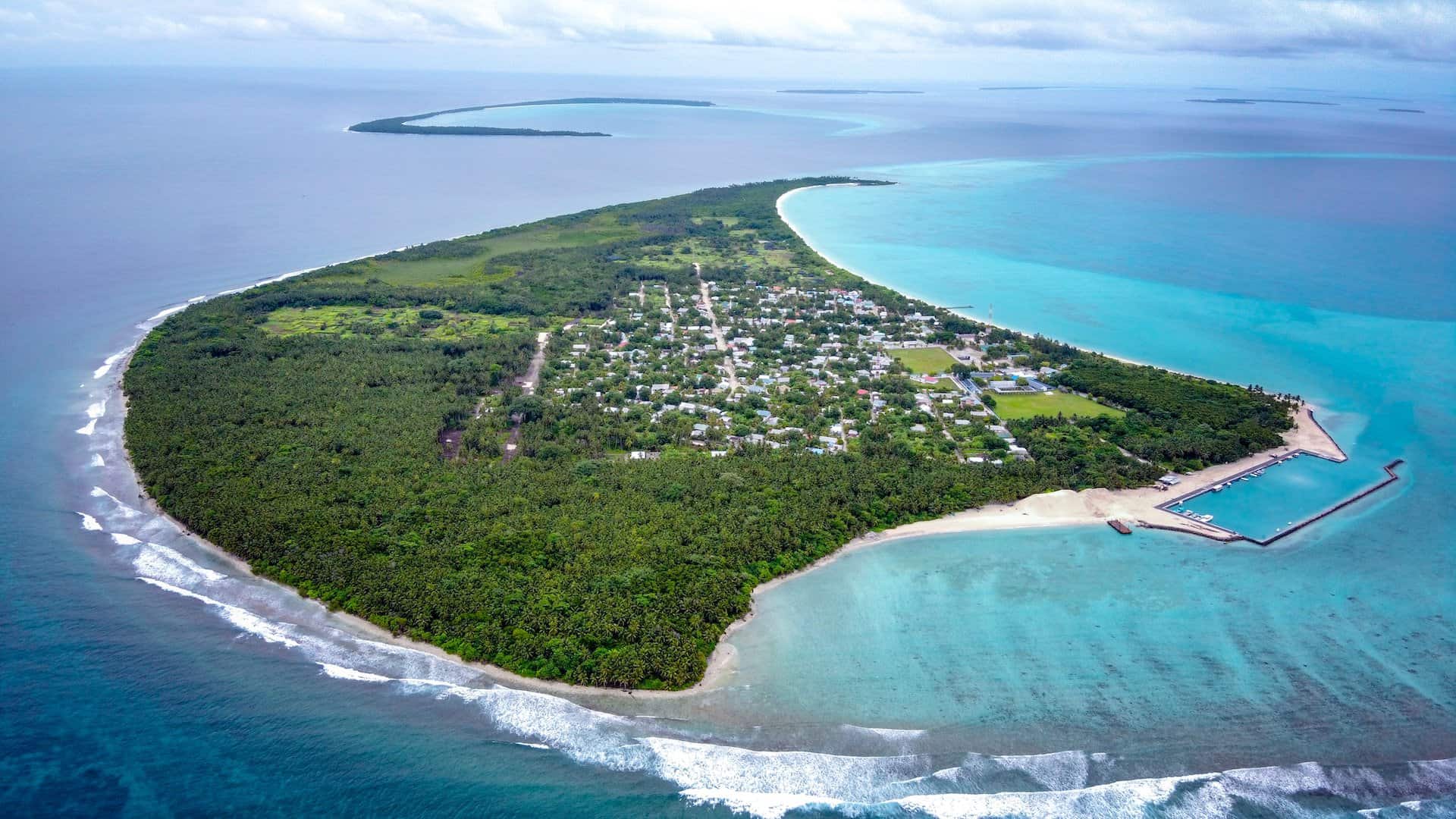
There’s a big world out there. It has 195 universally recognized countries, some of them stretching over immense and diverse landscapes, while others are extremely tiny in comparison and mostly overlooked when thinking about what the word ‘country’ usually means to most of us.
We probably imagine a massive land area and a pretty big population, but a few of these nations are smaller than the cities some of us live in.
Actually, the top 20 smallest countries in the world together have a smaller surface than cities like Los Angeles, Tokyo, or New York. Most of them are well known, while others are more obscure.
Some are part of continental Europe, but most are tiny islands surrounded by ocean waters. But they all have one thing in common: they have a lot to offer to visitors, from picture perfect beaches and lush green forests to coral atolls or impressive history.
Let’s find out which are the smallest countries in the world.
20. Micronesia – 271 Square Miles
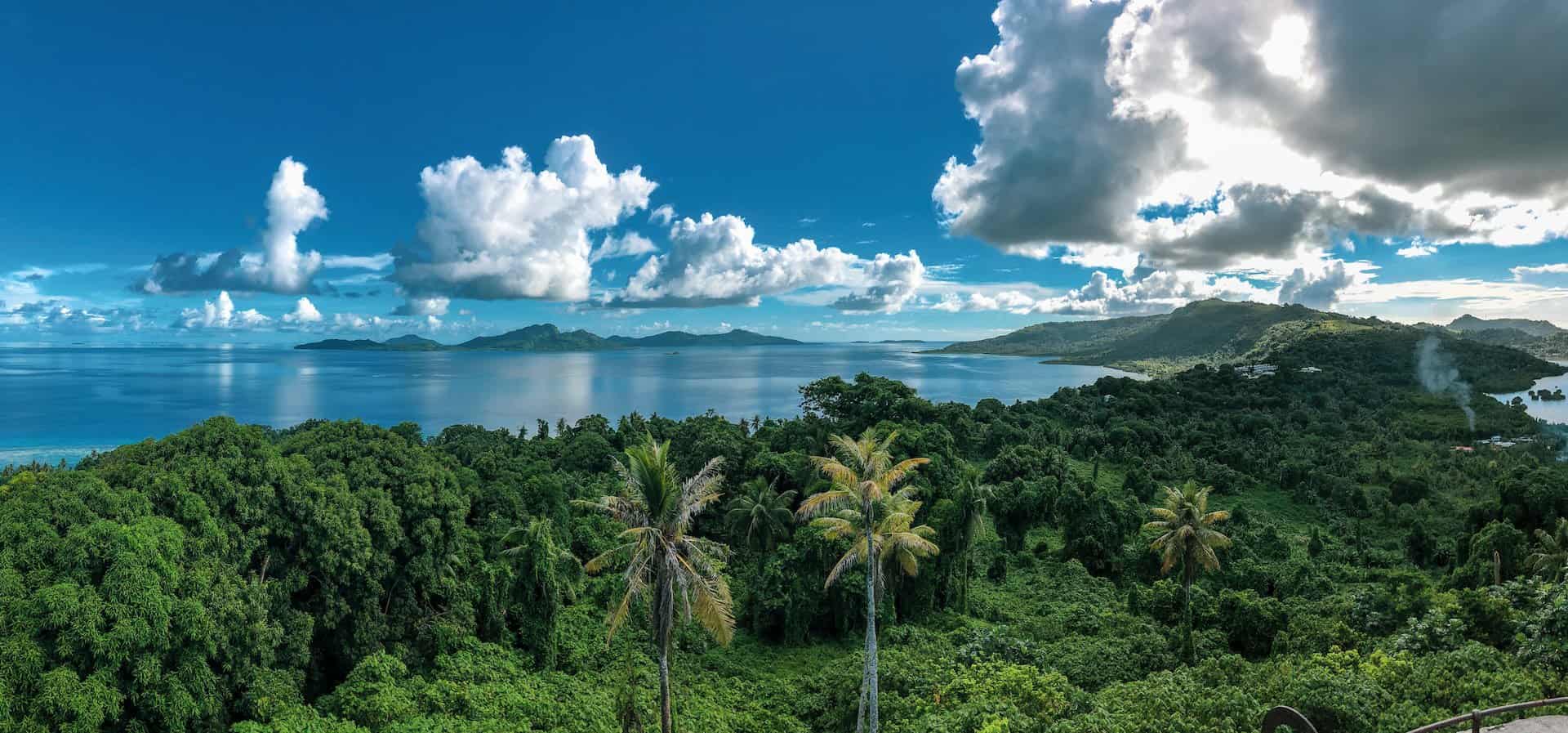
The Federated States of Micronesia, more commonly known as Micronesia is an island country located in Oceania. The most interesting thing about Micronesia is that it’s comprised of around 607 islands, with a total combined land area of 271 square miles, or 702 square km.
On the other hand though, it’s got more than 1 million square miles covered by water, which gives it an interesting advantage as the 14th largest exclusive economic zone in the world.
The capital city is called Palikir and it’s situated on the Pohnpei Island.
19. Singapore – 265 Square Miles

The Republic of Singapore, or simply Singapore, is a city-state located in the southern Malay Peninsula, well known as one of Asia’s most impressive vacation destinations.
The nation is formed by a main island surrounded by 60 smaller ones. Its highest peak is only 531 feet (162 meters) high, and about two thirds of the main island sits less than 50 feet above the sea level.
Despite the disadvantages that come with occupying a very small land area, 265 square miles in total, Singapore is also the largest port in Southeast Asia and one of the busiest in the world, which contributes to its strong economy.
18. Saint Lucia – 234 Square Miles
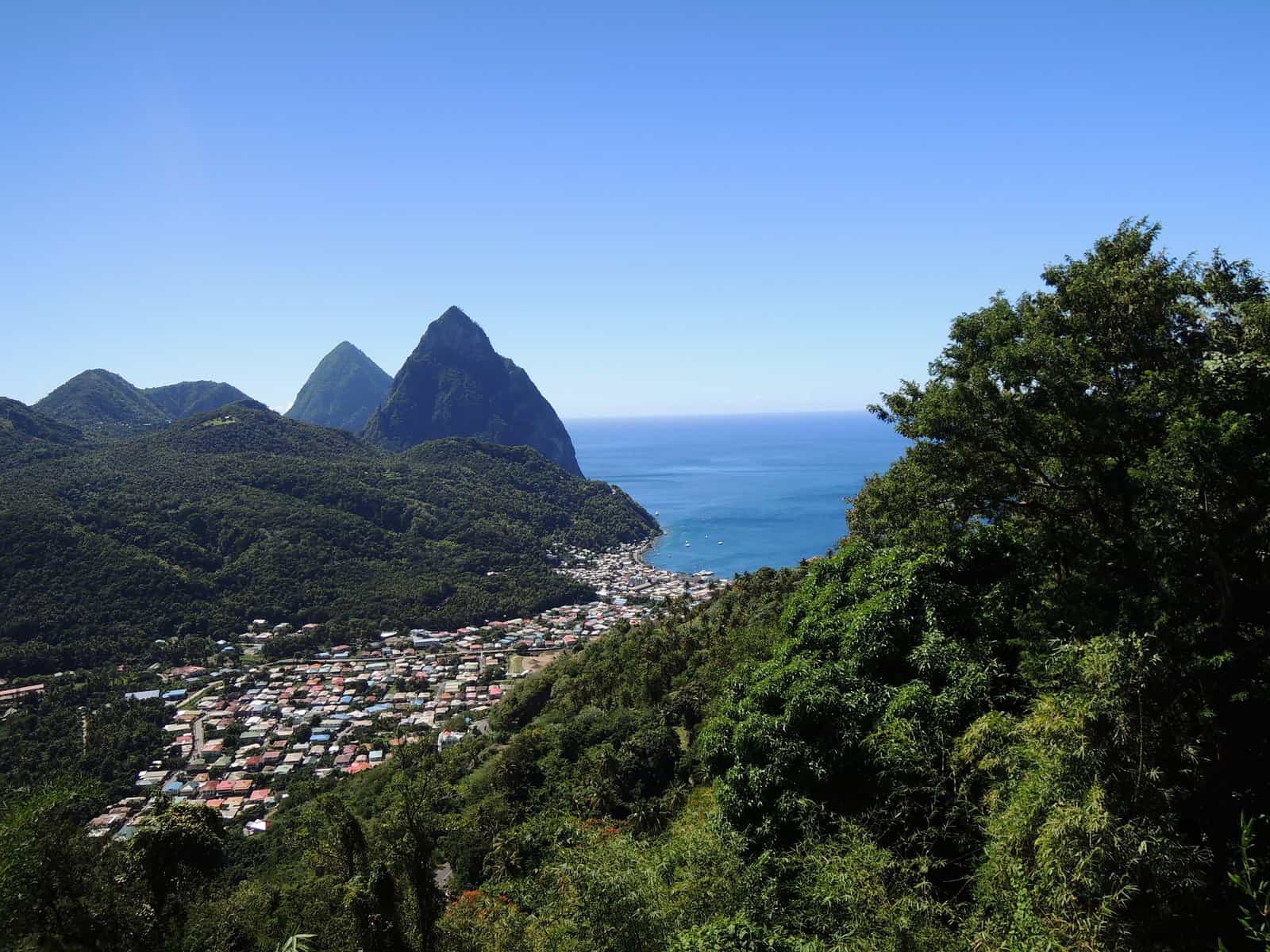
Surrounded by the waters of the Atlantic Ocean and the Caribbean Sea, the island country of Saint Lucia is one of the smallest countries in the world, covering only 234 square miles.
The tropical island is a paradise for nature lovers, with the most interesting landscape feature being a pair of stunning mountains called the Pitons, located on its west coast.
Saint Lucia also has volcanic beaches, coral reefs perfect for diving, and a lush rainforest on its sparsely populated interior.
17. Andorra – 181 Square Miles
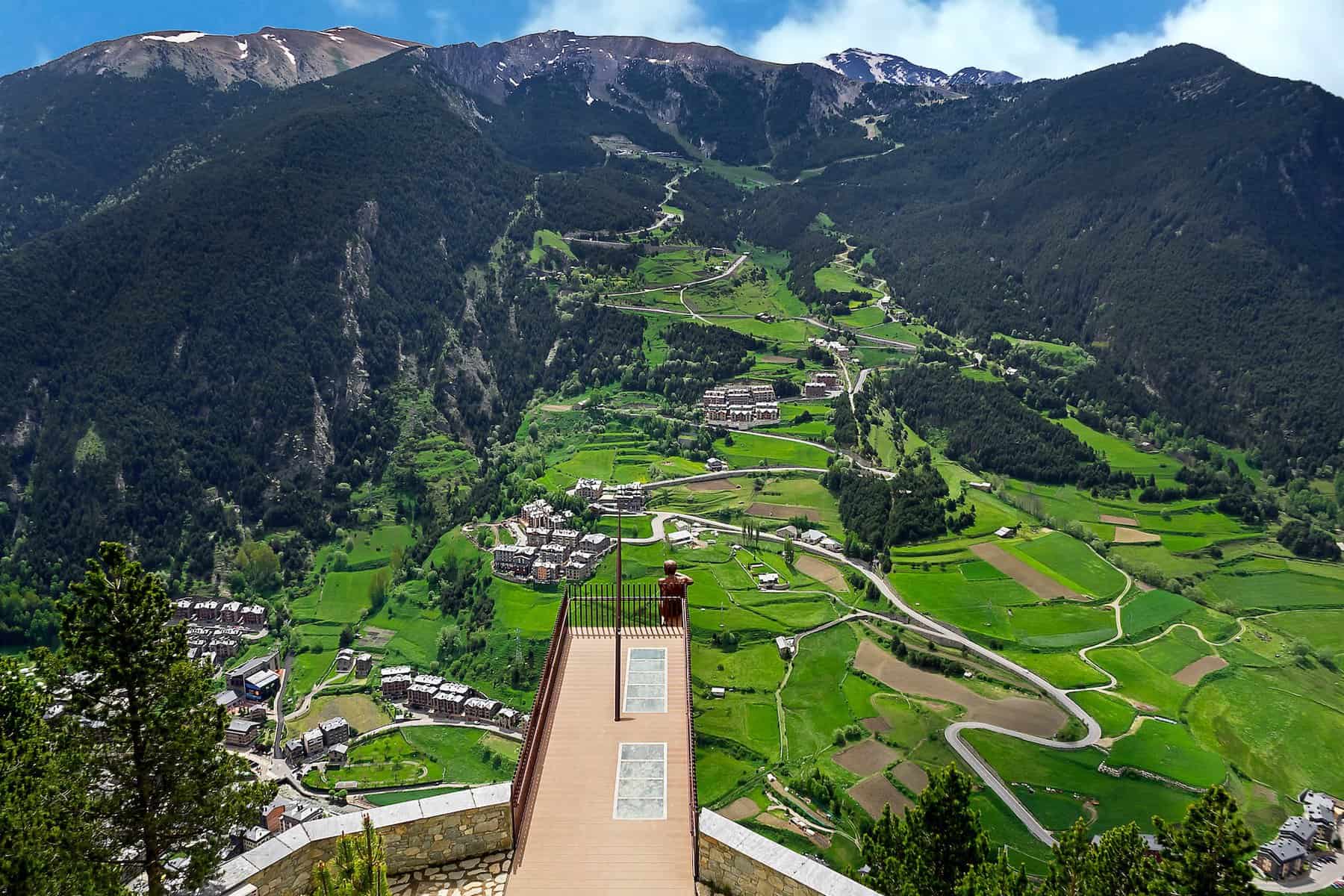
Covering 181 square miles, the Principality of Andorra, simply known as Andorra, is a landlocked country tucked away in the Pyrenees, in between France and Spain, and a heaven for hikers and nature lovers.
It’s the sixth smallest state in Europe, and has a population of just below 80,000 people, living in the rugged, mountainous terrain. The most interesting thing about Andorra is that over half of its area consists of ski resorts. That means 109 square miles of ski ground from its total of 181.
How’s that for a fun country?
16. Palau – 180 Square Miles

The Republic of Palau is another island country, comprised of 340 islands. Located in the western Pacific, the country is a diver’s paradise. It’s considered to be among the best places to dive on the entire planet.
Speaking of paradise, out of the total of 340 islands, only 9 of them are inhabited, with Koror being the most populous and home to the eponymous city. The rest of the islands are nothing but pristine nature, covered in beautiful forests, waterfalls, and stunning beaches.
15. Seychelles – 175 Square Miles
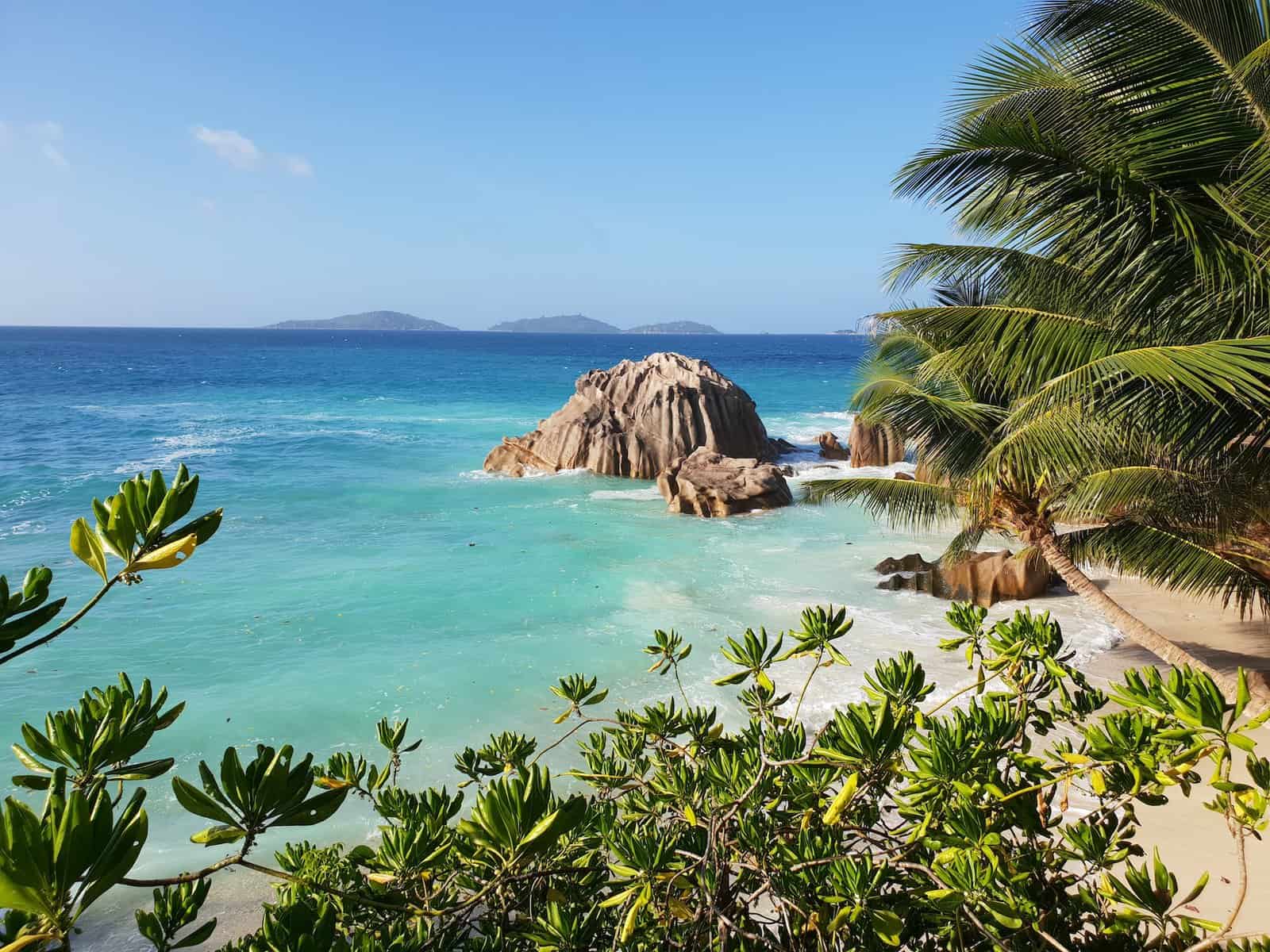
Situated in the Indian Ocean, northeast of Madagascar, the Seychelles archipelago has been part of the United Kingdom until 1976 when it has obtained its independence.
The nation consists of 115 tropical islands and is considered part of the continent of Africa. The capital, Victoria, is also its largest city. The islands were uninhabited up until the 16th century when they were discovered by the Europeans.
Its economy is mostly based on agriculture, but tourism is rising rapidly thanks to its natural beauty and location.
14. Antigua and Barbuda – 171 Square Miles

Part of the British Commonwealth, the dual island nation of Antigua and Barbuda is called the ‘Land of 365 Beaches’ for its abundance of beaches. Locals say it’s got one for each day of the year.
It’s a very impressive tourist destination, with plenty of wonderful hotels and resorts, and opportunities for adventure or sitting on a new beach every day doing not much.
13. Barbados – 167 Square Miles

It may be small at only 167 square miles, but Barbados is more alive than most bigger countries. The island nation has such a vibrant culture, full of festivals, nightlife and very friendly locals.
It’s part of the Caribbean islands, north of Venezuela, and is home to almost 300,000 people. The capital and largest city is Bridgetown, and the official language is English.
The terrain of the island is mostly flat, with the highest point rising to only 1,120 feet, or 340 meters, above the sea level.
12. Saint Vincent and the Grenadines – 150 Square Miles

Saint Vincent and the Grenadines is another island country located between the waters of the Caribbean Sea and the Atlantic Ocean, north of Trinidad and Tobago.
You’ve most probably seen a little bit of the main island of Saint Vincent if you’ve watched Pirates of the Caribbean. Its pristine coastline served as backdrop for filming the iconic movie.
11. Grenada – 133 Square Miles

Southwest of Saint Vincent and the Grenadines lies the island nation of Grenada, comprised of the main island of Grenada, two smaller islands called Carriacou and Petite Martinique, and several small islands that are part of the Grenadines.
Grenada stretches on a total of 133 square miles and has an estimated population of about 112,523. Known for its production of mace and nutmeg, Grenada is also called ‘The Island of Spice’.
The terrain of the island of Grenada includes the stratovolcano Mount Saint Catherine, which is part of the island’s natural attractions.
10. Malta – 122 Square Miles
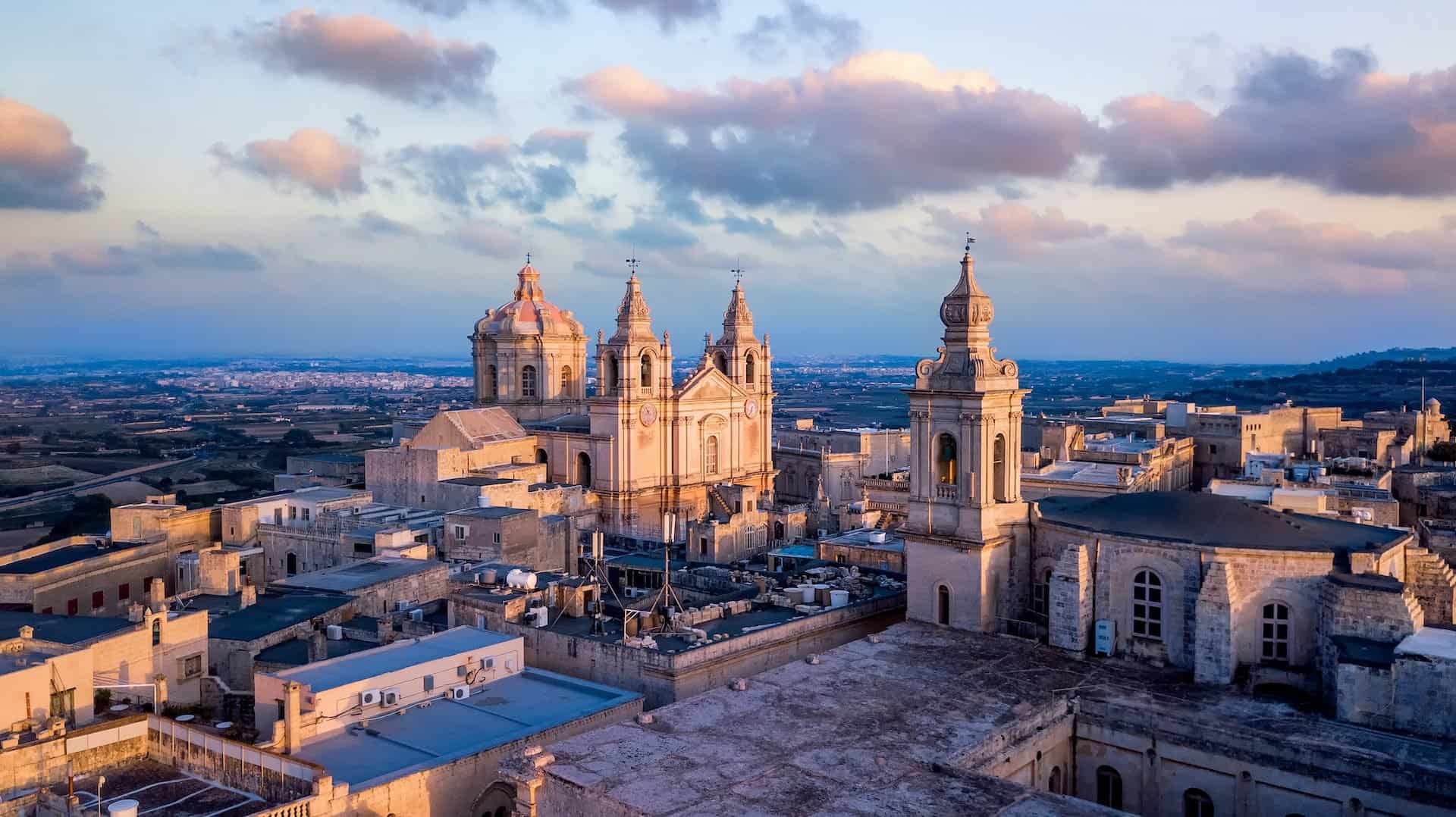
Malta, officially called the Republic of Malta, is an island country in the central Mediterranean Sea. Despite its turbulent history, the people of this country are extremely welcoming. And speaking of people, it’s the country with one of the highest population densities in the world.
It’s got a population of more than 500,000, which combined with the total land area of 122 square miles that the country has, makes it the fourth most densely populated sovereign country in the world.
Located 58 miles south of Sicily and 55 miles east of Tunisia, Malta is a popular tourist attraction. The country’s terrain is mostly flat, with the highest point rising to only 830 feet above the sea, but it offers plenty of natural beauty even so.
9. Maldives – 115 Square Miles

We’re pretty sure you’ve at least heard of the Maldives. It’s one of those luxury tropical destinations that everybody dreams about when they plan their next vacation.
Well known for its incredibly beautiful beaches, dreamy resorts, and diving and snorkeling opportunities, the Maldives is comprised of no less than 1190 islands in the Indian Ocean grouped into 26 coral atolls. Out of them, less than a third are inhabited.
With the highest point at only 7.8 feet above sea level, it’s the lowest lying nation in the world. That may be interesting from a touristic point of view, but it’s also a big issue since rising sea levels are slowly swallowing the country.
8. Saint Kitts and Nevis – 101 Square Miles
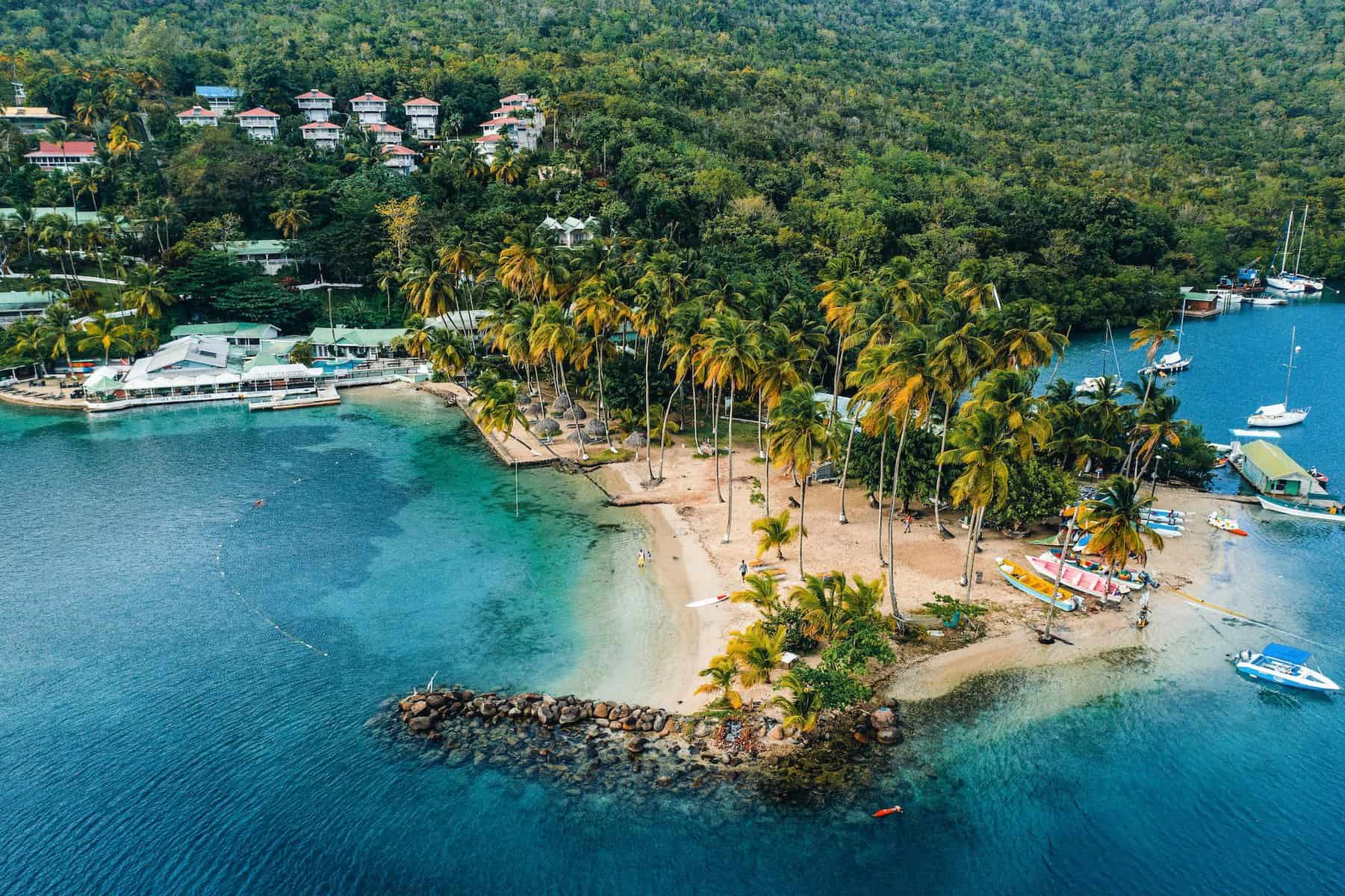
Saint Kitts and Nevis is a Caribbean island country with a population of less than 50,000 people. That and the 101 square miles of land area make it the smallest country in the Americas.
Located in the eastern Caribbean Sea, between Puerto Rico and Trinidad and Tobago, Saint Kitts and Nevis is a tropical paradise surrounded by coral reefs. Its main industry used to be sugarcane, but now it’s tourism that brings the most income.
7. Marshall Islands – 70 Square Miles
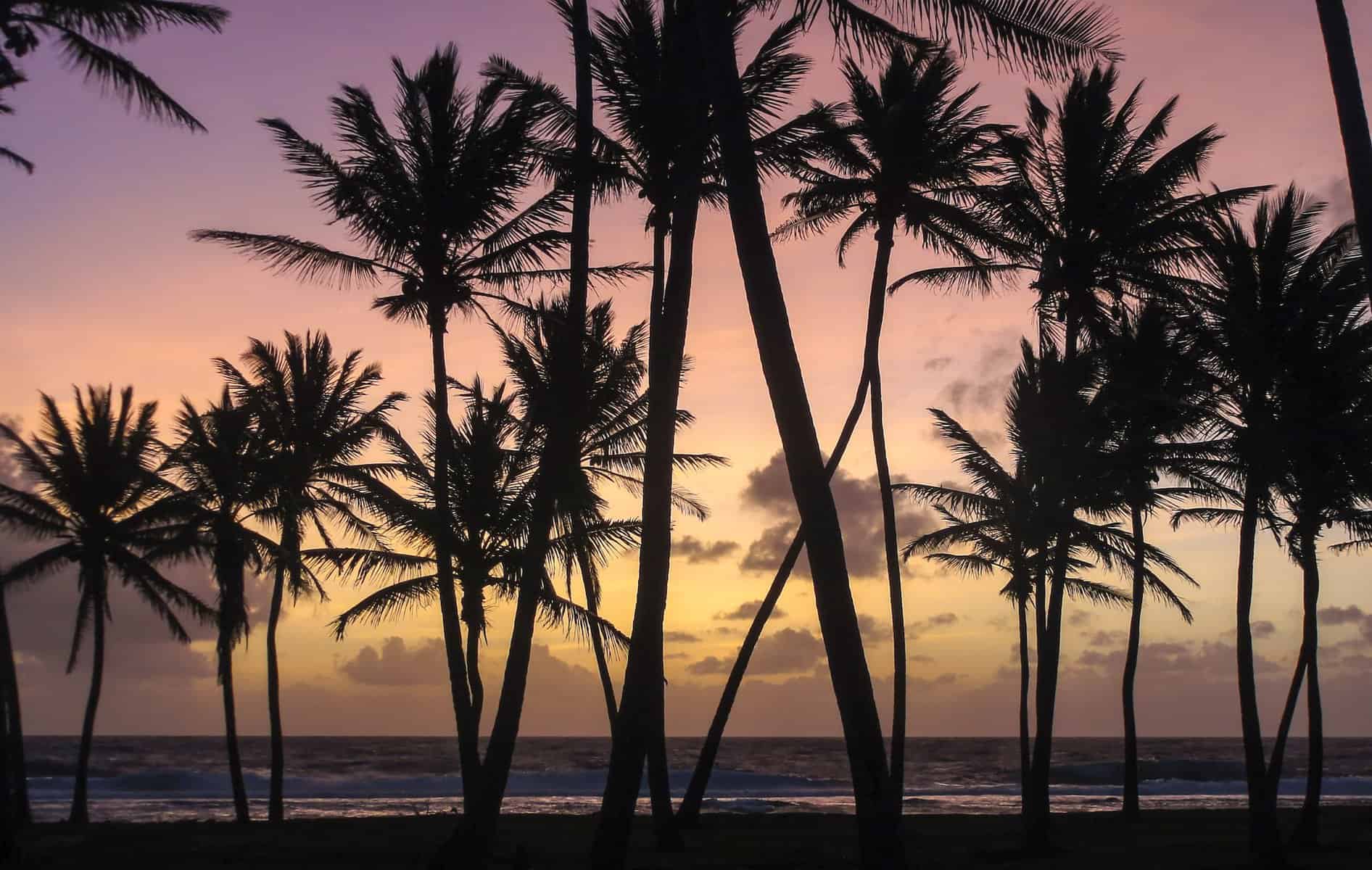
The Marshall Islands is a chain of 29 coral atolls and five main islands near the Equator in the Pacific Ocean, halfway between Hawaii and Australia.
One of the atolls, the Bikini Atoll, served as a nuclear weapons testing ground for the United States between 1946 and 1958. Its inhabitants were evacuated and still live in exile even today because the islands comprising the atoll are contaminated with high levels of radiation.
Today, the US provides support to the Marshall Islands and provides security and defense for the area in exchange for using part of its territory as a military base and missile test range.
6. Liechtenstein – 62 Square Miles
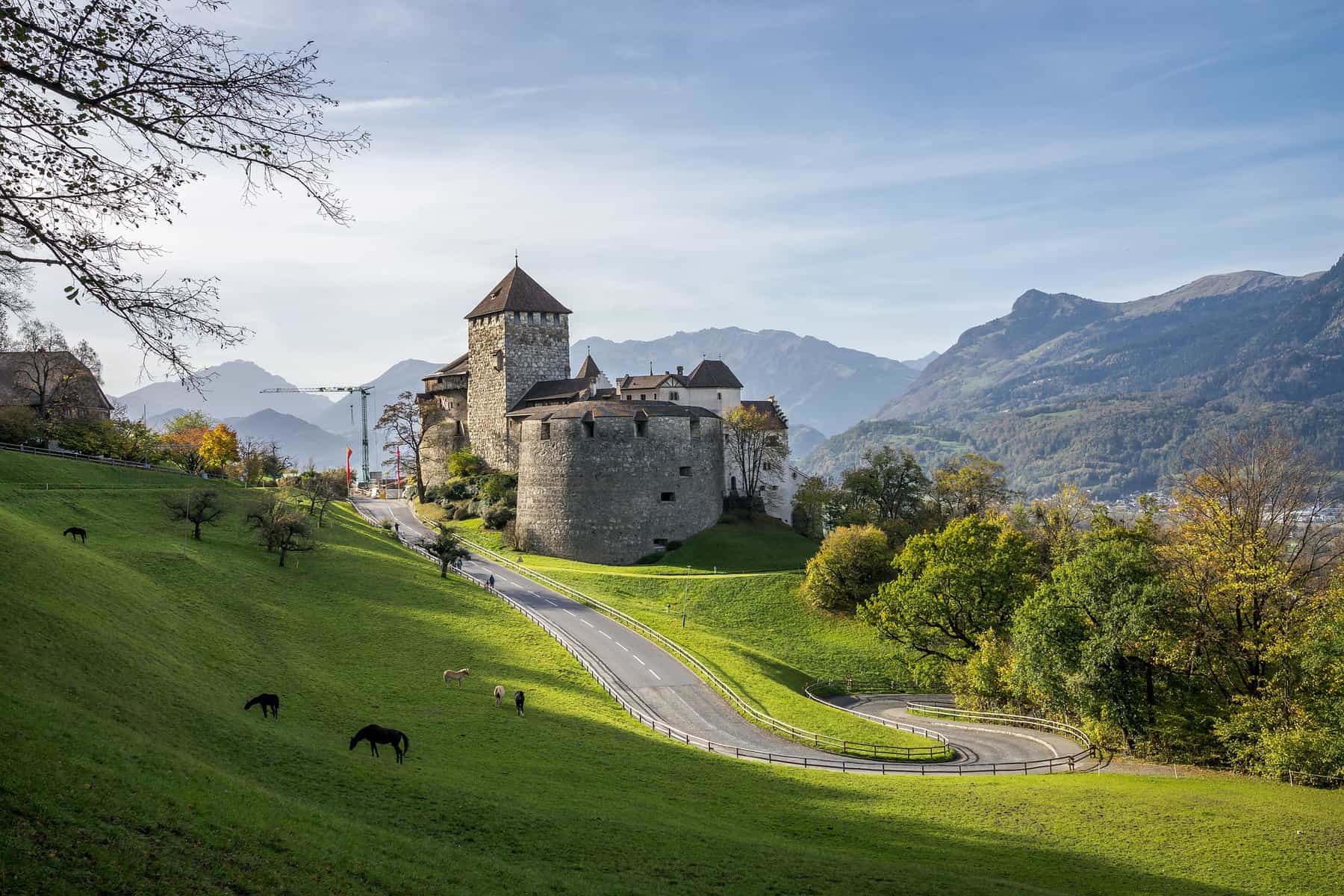
Tucked between Austria and Switzerland, the Principality of Liechtenstein is a microstate with a land area of 62 square miles and a population of less than 40,000.
The country located on the Rhine River abolished its army back in 1868 and remained neutral and untouched during both the World War I and World War II. Tourism is one of the leading industries there, sponsored by the government.
5. San Marino – 24 Square Miles
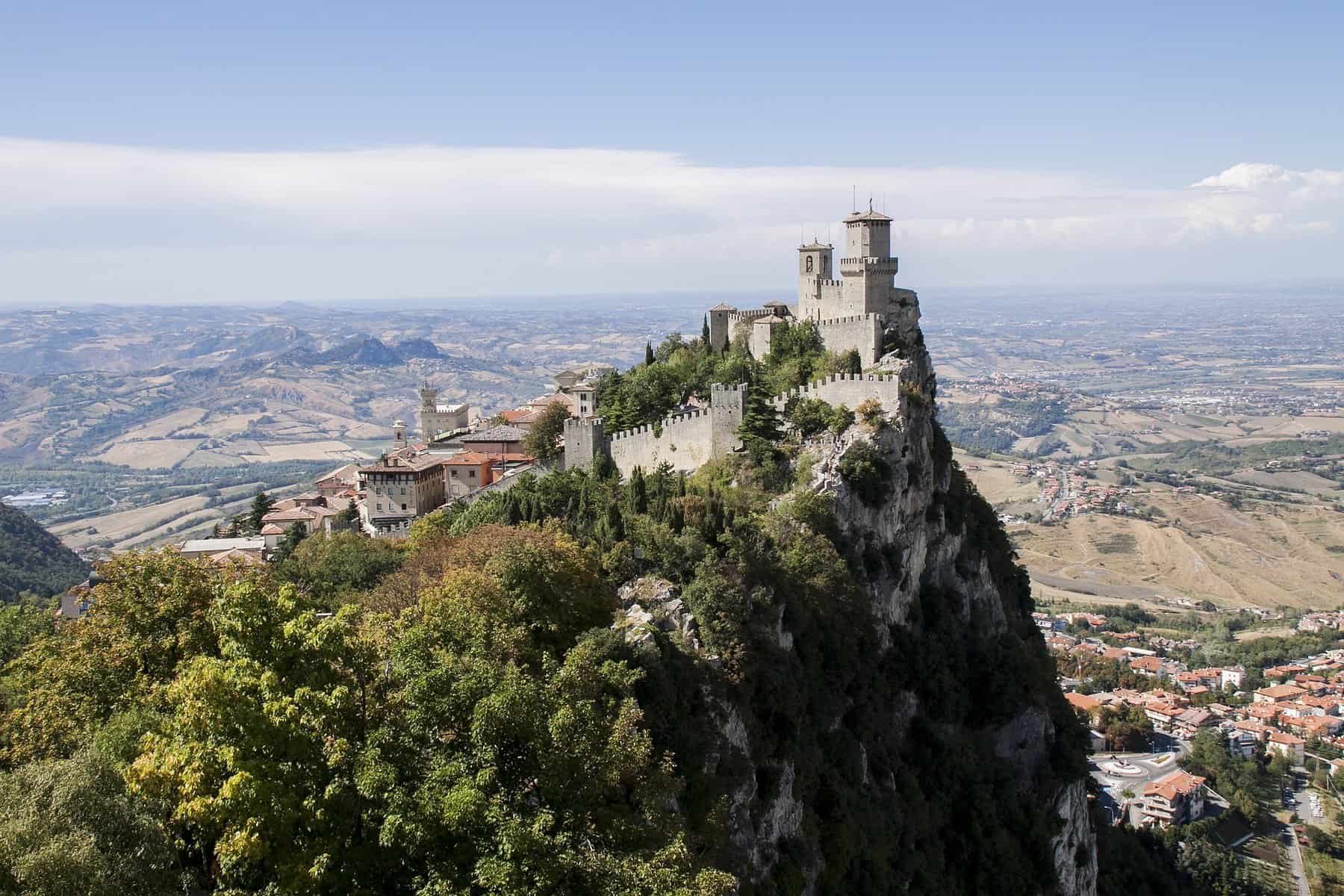
San Marino is a landlocked country from Europe, completely surrounded by Italy. Home to less than 35,000 people, it covers a surface of only 24 square miles. Its territory is filled with rugged mountains, with the highest point being the 2,477 feet Monte Titano.
The country has Italian as the official spoken language and no official religion. It’s one of the oldest countries in Europe, founded in the fourth century.
4. Tuvalu – 10 Square Miles

Tuvalu is a small archipelago of 9 coral islands in the west central part of the Pacific Ocean. Despite its sheer beauty and unique location, Tuvalu suffers greatly because none of its islands have any rivers or streams, and since they’re mostly coral atolls, no groundwater as well. Therefore, drinking water is gathered through catchment systems and kept in storage.
A bigger issue than drought is that Tuvalu is slowly being swallowed by the rising water levels due to climate change. Also, the coral reefs are dying and because of that coastlines are eroding into the sea.
It has been predicted that Tuvalu will become uninhabitable in the next 50 to 100 years.
3. Nauru – 8.1 Square Miles

The third smallest country in the world and the smallest island nation, Nauru covers only 8.1 square miles. It’s located in the South Pacific Ocean, has a population of about 11,000 people, and no official capital.
With phosphate mining as the dominating industry for most of the 20th century, phosphate is the only thing that Nauru exports. On the other hand, food, water, and manufactured items are imported from Australia.
2. Monaco – 0.78 Square Miles

Situated between France and the Mediterranean Sea, Monaco welcomes the world’s richest people, who are drawn by its famous resort and the only official city, Monte Carlo.
The country is well known for its iconic casinos, beautiful beaches, luxurious yachts, strong banking system, and car racing events like the Grand Prix de Monaco. All that packed in less than one square mile.
1. Vatican City – 0.17 Square Miles

Vatican City is the smallest country in the world, covering only 0.17 square miles, but its religious influence is well known, being the spiritual center of the Roman Catholic church.
It’s called a city state and it’s located right in the heart of Rome, Italy. Despite being so small, it has its own banking system, with its own currency – the Vatican Euro, a post office and telephone system, radio station, and a population of less than 500 people as of 2019.
Final Thoughts
Despite being the smallest countries in the world, they are all very interesting, some for their location and topography, others for their rich history or the perks they offer to their inhabitants.
While some of them are landlocked countries, most are surrounded by seas and oceans, with a few being in danger of disappearing into the waters that surround them.
Nevertheless, all of them have something to offer to visitors.
Contents
- 20. Micronesia – 271 Square Miles
- 19. Singapore – 265 Square Miles
- 18. Saint Lucia – 234 Square Miles
- 17. Andorra – 181 Square Miles
- 16. Palau – 180 Square Miles
- 15. Seychelles – 175 Square Miles
- 14. Antigua and Barbuda – 171 Square Miles
- 13. Barbados – 167 Square Miles
- 12. Saint Vincent and the Grenadines – 150 Square Miles
- 11. Grenada – 133 Square Miles
- 10. Malta – 122 Square Miles
- 9. Maldives – 115 Square Miles
- 8. Saint Kitts and Nevis – 101 Square Miles
- 7. Marshall Islands – 70 Square Miles
- 6. Liechtenstein – 62 Square Miles
- 5. San Marino – 24 Square Miles
- 4. Tuvalu – 10 Square Miles
- 3. Nauru – 8.1 Square Miles
- 2. Monaco – 0.78 Square Miles
- 1. Vatican City – 0.17 Square Miles

